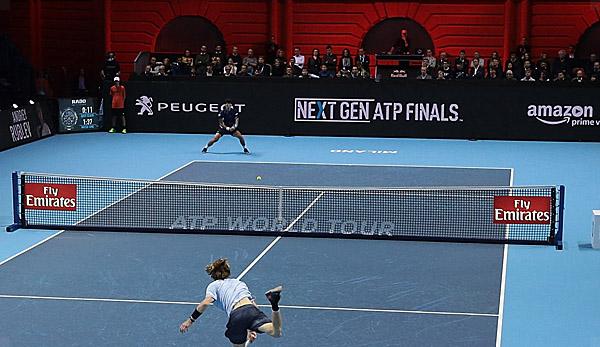Tennis
Blog of the week: Heavy Stand for Tradition Preservers
The #NextGen final in Milan has shown that tennis will change in the coming years. Must.
While London has long since played host to the pros’ open-minded World Cup, experts, fans and the media continue to discuss the reform initiatives at the Milan #NextGen final. At this point, most of the ATP union’s considerations were welcomed a few months ago – and in fact, this assessment has hardly changed at all in the practical test.
In order to speed up the game and eliminate so-called dead times in the match, it would only be to be welcomed if the shot clock was introduced in tennis as soon as possible, not only on the ATP Tour but also at the Grand Slams – of course in agreement with the WTA. The shortening of the now sometimes too long play-in period is also productive, at the moment there is far too much dawdling to be observed. I don’t know what kind of use the No-Let-Rule should have for the development of a modern game. That’s all the time you have to do to repeat a surcharge.
You don’t have to implement all reforms in one fell swoop anyway, so the sets can continue to be played up to six and then tiebreak – and then continue with the rule of access. It is important to limit the idiosyncrasies and gimmicks of the stars, i. e. also the extensive use of towels after every rally or the search for suitable balls.
Often we see that the pros only have to throw the balls as a pretext to stall time. These delay scenarios can also be observed with something that sometimes doesn’t deserve the name “Medical Timeout” anymore, because often enough it’s just to get airborne by pumped out players and not real injuries. Hard enough, but the demand remains that the abuse must be contained. The sensitive question is: Can this issue really be “regulated”?
But it is also foreseeable that there will come a time when another generation of spectators with a short attention span will demand shorter sets from the tennis, and perhaps with other radical cuts. Traditional keepers will have a tough job faster than expected. It may or may not be regrettable, but it is likely that the (highly armed) technique will also play an even more dominant role in tennis and will soon ensure that no more line judges will be needed. Since there is already an imbalance in the tournaments, partly Hawk-eye, partly not, the financially strong events will soon be ahead – like Indian Wells.
Which should also be self-evident: The greater freedom of movement for fans. Just because people have tolerated what is severely punished elsewhere in some places so far – everyone only has to keep in mind the locations of Wimbledon and New York. The limitation is also clear: What happens directly in front of the player’s eyes is to be evaluated differently. Here the fans should have an interest in not disturbing the pros with wanderlust already in the sense of the game quality.













You must be logged in to post a comment Login